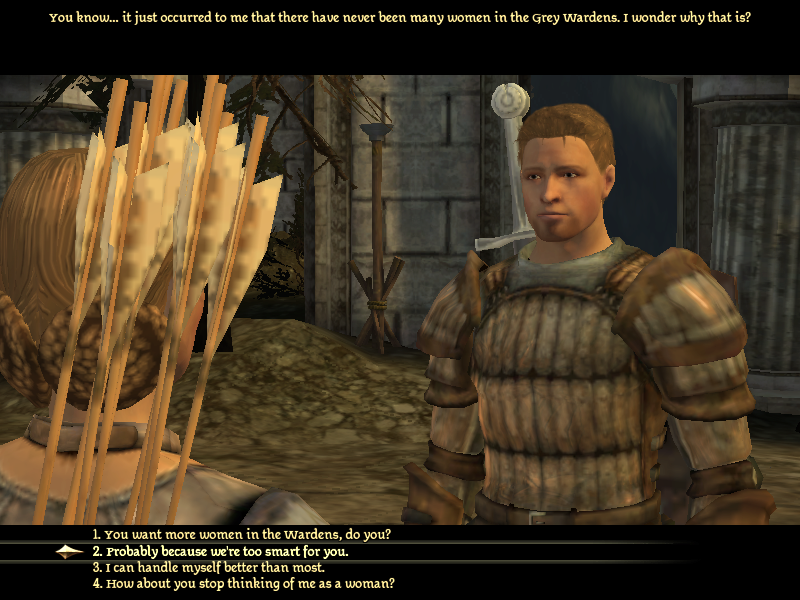In a class where the assignment is to play video games, I was very interested to see what my classmates chose to play. And after reading through many of their blogs, a common theme among a lot of games, specifically action games, is that of immersion. And while I have played many games that would be considered immersive, I had never thought about why they were considered as such. Miso talks about immersion in his blog post about Thief and how one of the most important attributes of an immersive game is to make sure the game remain in the world of realism, as games played outside of this world tend to break the immersive experience (he uses a magical fireball not melting ice as a great example). Following up on this, Chris references to how some people prefer a first person perspective in Skyrim as it increase immersion. And while Skyrim does not thrive in terms of immersion due to its mythical setting and use of magic, the use of first person still allows for an immersive experience.
Going further, Jean Paul brings up Jamie Madigan and the “completeness of sensory information” and “cognitively demanding environments” act as a measure for immersion games. This thought really resonates with me, as while I play a game, part of the immersion comes from the details found within a game. The completeness of information hits home, as this is the feeling of being in the game world, seeing the game world and processing it as you would real life. Aaron also talks about Fallout 4’s immersive quality, and how the addition of real world connections, such as having a pet dog that you have to take care of, makes the game realistic. He also references Madigan, and her concept of the spatial presence of being inside a game create this immersive experience.
And lastly, as a counter to immersion, Samantha talks about how Britney Spears American Dream the company uses this idea of immersion as a way to promote its casualness. Instead of developing a world that promotes realism, it breaks the fourth wall often, calling upon jokes and ideas in the real world in an effort to keep it casual.
After reading all these posts and playing some of the games, I definitely feel the my understanding of the use of immersion in games is much more complete. Also, I found it especially interesting in reading about how games that aren’t exactly realistic attempt to model immersion. Games such as Skyrim are not realistic; however, they use concepts of immersion to create a better game play experience.



